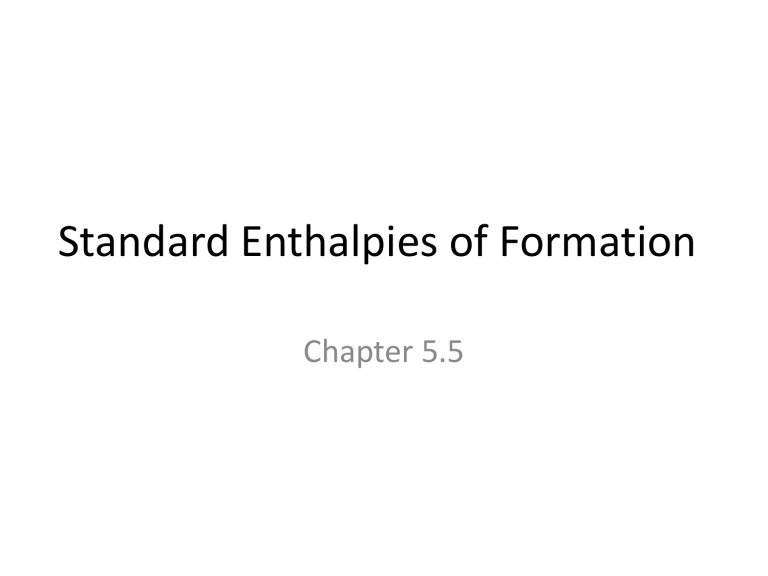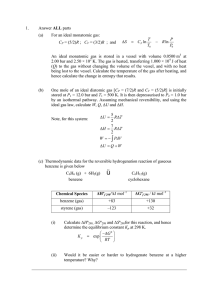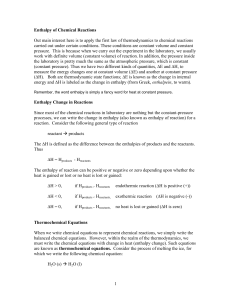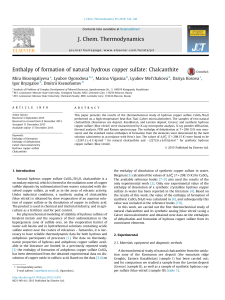Standard Enthalpies of Formation Chapter 5.5

Standard Enthalpies of Formation
Chapter 5.5
∆H f
⁰
• The standard enthalpy of formation ( ∆H f
⁰ ) of a compound is the change in enthalpy that occurs when 1 mol of a compound is formed from its elements in their standard states
½ N
2(g)
+ O
2(g)
NO
2(g)
∆H f
⁰= 33.2kJ/mol
Standard State
• Standard state is the most stable form of a substance under standard conditions (25⁰C and 100kPa)
• The standard enthalpy of formation ( ∆H f
⁰ ) for an element in its standard state is zero magnesium mercury chlorine
Writing Thermochemical Formation
Equations
1. Write one mole of product in the state that has been specified
2. Write the reactant elements in their standard states
3. Choose equation coefficients for the reactants to give a balanced equation yielding one mole of product
Practice
• Write a thermochemical equation for the formation of each of the following compounds from its elements in their standard states a) a solution of calcium sulfate a) liquid ethanol
∆H f
⁰ values can be looked up in tables
Compound Thermochemical Formation Equation ∆H f
⁰
There is one in your textbook on page 320
Standard Enthalpy of Reaction
A table of standard enthlapies of formation and the following formula can be used to determine the standard enthalpy of any chemical reaction
∆Hr⁰ = Σ n products
∆H⁰ products
- Σ n reactants
∆H⁰ reactants
Practice
• Benzene (C
6
H
6
) burns in air to produce carbon dioxide and liquid water. How much heat is released per mole of benzene combusted?
The standard enthalpy of formation of benzene is 49.04 kJ/mol.
Practice Makes Perfect!
• Solid calcium oxide reacts with liquid water to produce solid calcium hydroxide. If the standard enthalpies of formation of solid calcium oxide and solid calcium hydroxide are
-634.9kJ/mol and -986.1kJ/mol respectively, calculate the standard enthalpy of reaction.
HOMEWORK
Required Reading: p. 319-324
(remember to supplement your notes!)
Questions: p. 323 #1-2 p. 324 #1-10





